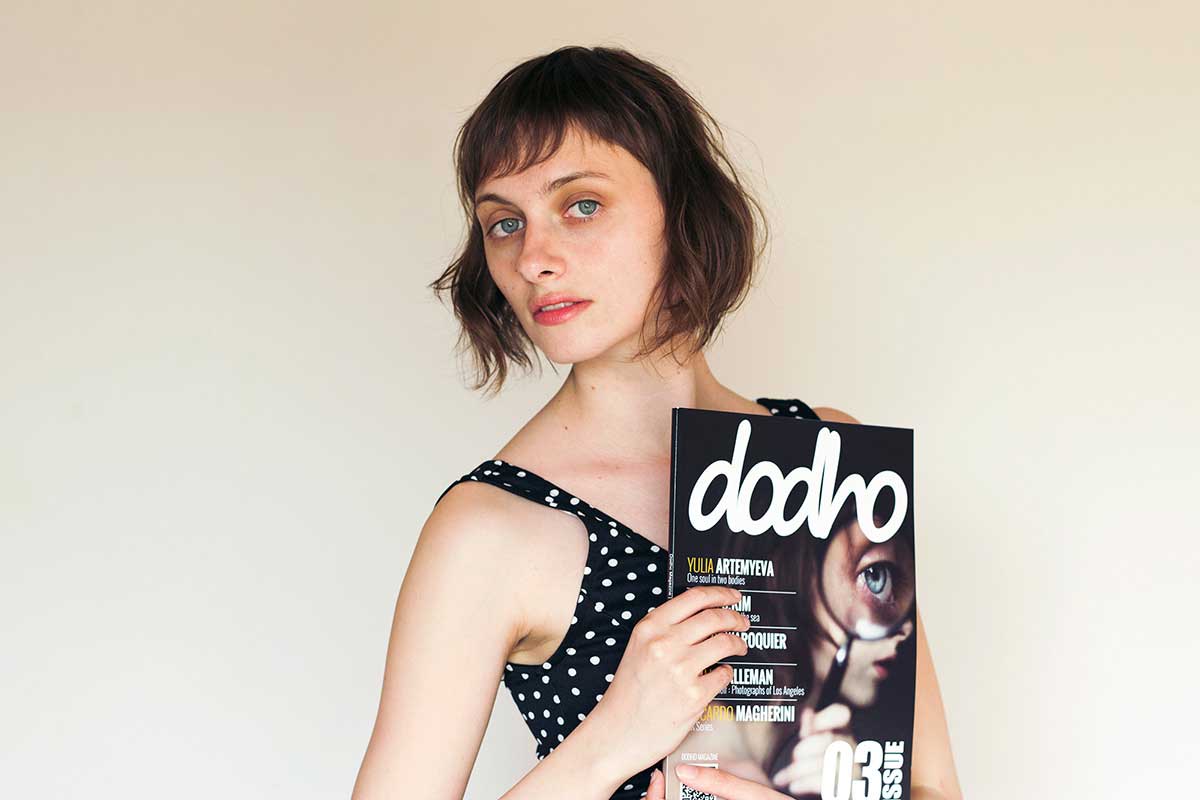Isabella Bubola is a 26 year old applied arts graduate and photographer from Croatia. Although she has always been involved in art, it wasn’t until she was about to finish high school that she changed her mind about studying languages and decided to take up art education instead.
Her primary focus is on fine art and portrait photography, but she also works in the field of graphic design, jewellery design (brand Coolaž) and illustration. Isabella seeks inspiration everywhere: from beautiful colours and a ray of sunlight peeking in through the window to the written word. In fact, writing has always had a huge influence on her photographic work and many times a sentence, word or verse sparked inspiration that was translated into the final image. Because of the importance writing has in her life, she started the blog Mirrored Mag about low-budget photography and creativity. Her motto is that ‘’gear doesn’t matter, your work speaks for itself’’. Inspiring young creatives is something she aspires to and in 2016. she started leading workshops and lectures. She very actively enforces youngsters, especially girls, to become more self-confident – both in life and in their creative work – and not to shy away from showing it to the world. [Official Website] [Print Version] [Digital Version]
Can you tell a little about yourself?
I am a 26 year old applied arts graduate with the constant need to create. Although most people know me for my photography, I have a lot of creative outlets, like writing, illustration and graphic design. I enjoy spending my time in nature, especially in the summer on the beach.
How did you get interested in photography?
It happened without pre-thought, really. Ever since I was a kid I had the urge to create things; my basement is still full of boxes filled with drawings and scribbles. Photography came as another medium of expression and I loved it a lot since it enabled me to document things.
What inspired you to take your cover photo in Dodho Magazine?
It was another one of my self portrait sessions and I was (and still am) interested in slightly altering the reality. Props like mirrors and glass are a great way to shift the usual and to create something perhaps unexpected. I had a magnifying glass at hand and really wanted to photograph something slightly eerie and out of place.
Three words that describe your works?
Emotional, calm, colour
How would you define your general style of photography?
I’m searching for tiny moments that happen in a fraction of a second and struggle to capture them. When I’m shooting portraits, it’s always those moments that fascinate me. A frown, a raised eyebrow, distress, curled up lips, the unexpected. In terms of aesthetics it’s always minimal and without unnecessary elements and 99% of my work was done using natural light.
In your opinion, what makes a good conceptual photograph?
The story behind it and how it’s done (the final image). I think these two things need to coexist in order for the photo to be »good», to have meaning for the beholder as well as for the artist.
What do you think makes a memorable project or photograph?
It depend on what we consider memorable. If it’s memorable in terms of history and culture, it was mostly those photographs that depicted a moment in time and society. Every era has its idols, its rises and falls, and it’s photographs that depicted those moments that are now part of our collective memory. Take the »Migrant mother», for example. Not only did it show part of the society at that particular time and place, but it also provoked a reaction and changed things for the better. Just for that sole fact I would take it as a memorable and successful project. It changed things, it altered lives.
On the other hand, if we talk about memorable in terms of our own tastes, then it’s those photos that strike a chord and make us recall some emotions or memories.
How do you know you got the shot you wanted?
Haha, good question! I don’t know, I just see it. It feels right. I think I’ve seen so many photos in my life that now I don’t think about them. I can take a look at a photo and know if it’s right, if that’s what I wanted or not.
Your idea of the perfect composition?
Looking back on my photos, the majority of them have a strong central composition which is what makes them so serene in the first place. So, yeah, it’s probably not the most fancy answer, but I’d go for a central composition.
What would I find in your camera bag?
Plasters! And a mirror. My camera, a Canon 600D and my favourite 50mm Sigma Art lens. Although sometimes I still shoot with my broken analog lens – some things you can’t achieve with a digital one.
What future plans do you have?
Experimenting more. That’s not a plan, as much as a some kind of resolution. I sometimes feel I’ve become too comfortable in my ‘’style’’ and then I get bored. Being bored for me is horrible and mind-draining, and I’m always trying to find different ways how to cope with that (maybe that’s the reason I create in many different mediums). So, yes, definitely experimenting more and trying things that are out of my comfort zone.
Finally, one last question. What opinion do you have of our print edition?
I love the big photos! They’re so nice to go through. And I like the feeling of the slightly glossy paper. One thing that I would change, if I’m completely honest, is the font choice and size (I would make it smaller).







